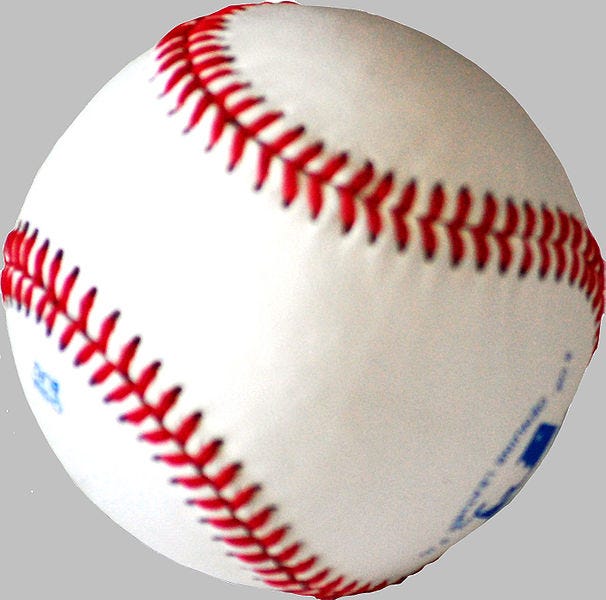
What a difference nine years can make.
In 2013, Curt Schilling’s first year of eligibility for Baseball’s Hall of Fame, he was selected on 38.8% of the ballots when 75% were needed to be inducted.
This year, his tenth and final year of eligibility for induction by the Baseball Writers Association of America (BBWAA), Schilling’s total fell again to 58.6%. After last year’s vote, Schilling had asked to be taken off the BBWAA ballot, and I don’t know how many respected his wishes, and how many kept him off for other reasons.
Those “other reasons” are mainly controversial social and political opinions he’s made since his retirement, including statements about the January 6, 2021 Capitol riot. It’s speculated that Schilling realized writers who were on the fence about him weren’t going to give him the honor, and expressed his preference that if he were to be voted in, it would be by the Hall of Fame’s Veterans Committee instead of the BBWAA.
I wonder if the two other years he lost votes also had to do with political statements made at the time. Boston Globe columnist Dan Shaughnessy admitted to withholding a vote for Schilling in 2016 due to “character.” Not poor character during Schilling’s playing career, but after. Perhaps there were other writers who “punished” Schilling by withholding their votes.
But it should also be asked: is Schilling an obvious Hall of Famer? Why did he get so few votes in his first year of eligibility?
At that time, I recall that discussion of his Hall of Fame candidacy included his low win total (currently 87th in Major League history) and lack of Cy Young awards. Of pitchers from the late 1980s to the late 2000’s, he was never mentioned in the same breath as Roger Clemens, Greg Maddux, Randy Johnson, or Pedro Martinez as among the greatest of the great.
While Clemens also didn’t get voted into the Hall of Fame by the BBWAA (because of alleged steroid use) the others got in easily:
- Maddux received 97.2% of the vote in his first year of eligibility.
- Johnson got 97.3% in his first year
- Martinez received 91.1% his first time up, with lower career totals than the other three but Sandy Koufax-like dominance in his prime years.
Maddux’s longtime Braves pitching teammates Tom Glavine and John Smoltz also breezed into the Hall in their first year of eligibility. The late Roy Halladay, who entered the majors several years after the others I’ve mentioned, got in on the first ballot in 2019. He had just 203 wins to Schilling’s 216, but his winning percentage was 65.9 to Schilling’s 59.7.
The only other Hall of Fame starting pitcher inducted in the last ten years by the BBWAA, Mike Mussina, received the honor in his sixth year of eligibility, and he has 54 more wins than Schilling.
What’s fascinating about all this is how the controversy around Schilling’s Hall of Fame status could have been different if the voters of 2013 thought like the voters today.
The case for Schilling has grown stronger mainly because more people are making it, not because his statistics have magically changed since he retired. Sabermetrics, “the mathematical and statistical analysis of baseball records,” favor Schilling.
For instance, this from Ben Lindbergh:
Whichever metric one uses to assess Hall worthiness irrespective of character — career WAR, JAWS, Hall rating — Schilling is a top-20 or top-30 pitcher of all time, and the best pitcher other than Clemens who hasn’t been enshrined.
I suspect older BBWAA writers in 2013, still resistant to the computer geeks and their new baseball stats, might have noticed that Schilling had just eight seasons where he won 15 games or more. But more writers from younger generations think like Lindbergh and are acquiring Hall of Fame ballots while older ones retire.
I’m inclined to agree with the sabermetrics in general, and would have voted for Schilling. He did not and has not disgraced the game of baseball regardless of what he’s said about non-baseball matters since.
But I wonder if there’s a simpler way of looking at the pitching without spending much time in the sabermetric weeds. In the past, a pitcher’s “traditional” statistics seemed to reward things beyond a pitcher’s control; wins depended on his teammates’ ability to get on base and score, and ERA relied on their fielding ability.
WHIP, however, is a statistic more in control by the pitcher. It stands for walks allowed plus hits allowed per inning pitched. Schilling is 57th all-time in WHIP. Among those who’ve pitched 2,500 innings (i.e..excluding relief pitchers and starters with short careers), he’s 25th. Many ahead of him pitched 100+ years ago. Among those who pitched 2,500 innings and began their career in the last 40 years, Schilling is fourth behind Martinez and the still-active Max Scherzer and Justin Verlander.
Politics might now keep Schilling out of the Hall of Fame, but politics didn’t keep him out in 2013. If more voters studied the game then like they do now, he’d have been in the Hall several years ago.
James Leroy Wilson writes The MVP Chase, Daily Miracles, The Daily Bible Chapter, and JL Cells. Thanks for your subscriptions and support!




No comments:
Post a Comment